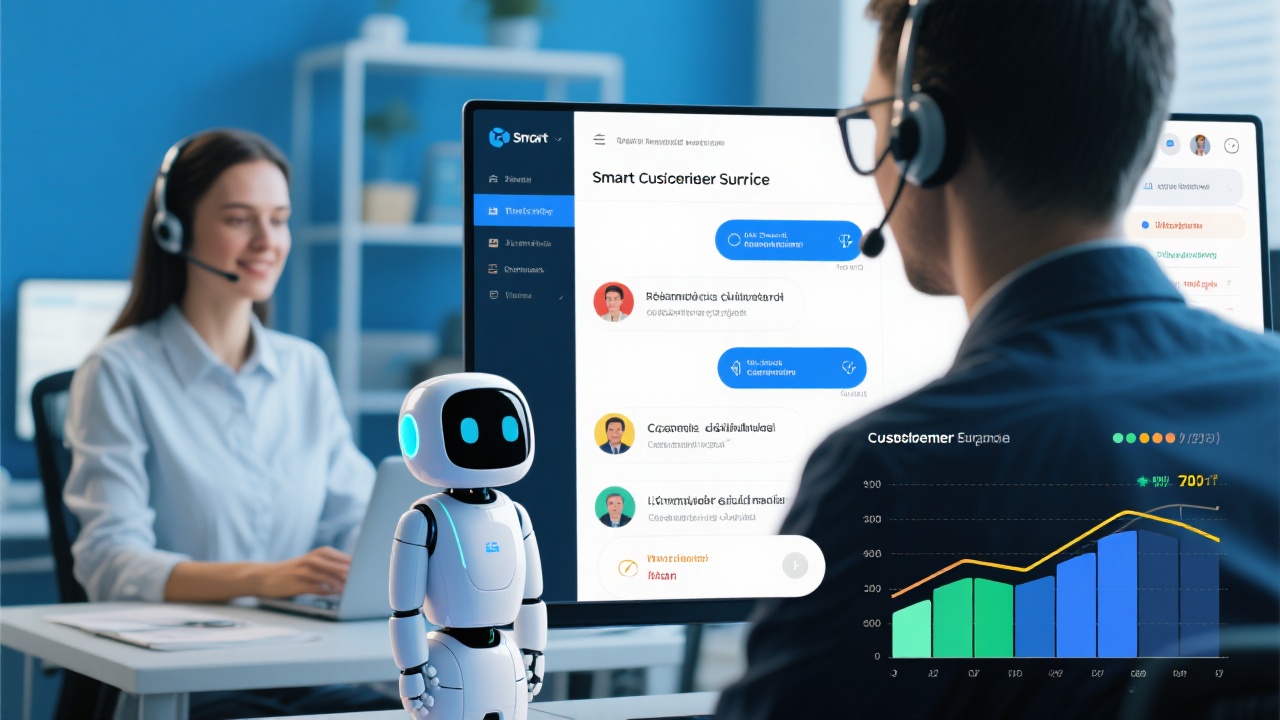 400-076-6558智领未来,外贸超级营销员
400-076-6558智领未来,外贸超级营销员
 400-076-6558智领未来,外贸超级营销员
400-076-6558智领未来,外贸超级营销员

In the highly competitive global B2B market, customer development is a crucial task for foreign trade enterprises. However, they often face challenges such as difficult customer acquisition, low efficiency, and lack of accuracy. According to a report from a well - known market research firm, nearly 70% of foreign trade companies struggle with finding high - quality potential customers. In this context, intelligent tools have become an important solution to these problems. This article aims to recommend 10 practical customer intelligent development tools and provide detailed usage tutorials to help foreign trade enterprises improve their customer development efficiency and precision.
The current situation of customer development in foreign trade enterprises is fraught with difficulties. The traditional customer development model, which relies mainly on exhibitions, trade magazines, and personal networks, has become less effective in the digital age. Many companies find it hard to reach a large number of potential customers, and the conversion rate of leads is relatively low. For example, a small - scale foreign trade company in the machinery industry reported that they spent approximately 30% of their annual budget on trade shows, but only achieved a conversion rate of about 5%.
Another significant challenge is the lack of accuracy in customer targeting. Without proper tools, it is difficult for enterprises to identify customers who have real purchasing needs and high purchasing power. This leads to a waste of resources on ineffective marketing efforts. A study by a leading business analytics firm showed that about 40% of marketing resources in foreign trade are wasted on non - targeted customers.
Intelligent tools can effectively address the above - mentioned challenges. They can provide a more comprehensive and accurate way to search for potential customers, analyze customer data, and manage customer relationships. For instance, intelligent search tools can quickly find a large number of potential customers from a global database, while data analysis tools can help evaluate the purchasing power and cooperation potential of these customers. According to a survey, companies that use intelligent customer development tools can increase their lead conversion rate by up to 30% and reduce customer acquisition costs by about 20%.
This article will introduce 10 practical customer intelligent development tools, covering key aspects such as customer search, lead screening, communication management, and data analysis. Each tool will be accompanied by a detailed usage tutorial, enabling foreign trade enterprises to quickly master the operation of these tools and improve their customer development efficiency.
Core Function: These tools have an enterprise database covering multiple countries and industries, supporting precise screening based on factors such as company scale and purchasing needs. They can help enterprises quickly find a large number of potential customers at the initial stage of customer development.
Applicable Scenario: Ideal for the initial stage of customer development when enterprises need to conduct large - scale potential customer mining.
Usage Tutorial:

Core Function: These tools allow users to query the import and export records of target market enterprises, as well as their business partners. This helps in evaluating the purchasing power and cooperation potential of customers.
Applicable Scenario: Useful for assessing the reliability and cooperation value of potential customers before establishing business relationships.
Usage Tutorial:
Core Function: These tools can accurately locate industry decision - makers and send development letters with one click. They are very effective in reaching high - value B2B customers.
Applicable Scenario: Suitable for B2B customer development, especially when targeting high - value customers in specific industries.
Usage Tutorial:

Core Function: These tools support batch email sending, open - rate tracking, and automatic follow - up. They are useful for the initial contact and continuous interaction with customers.
Applicable Scenario: Ideal for the early stage of customer development to establish and maintain communication with potential customers.
Usage Tutorial:
Core Function: These tools can automatically generate personalized development letters based on customer information, avoiding the problem of template - based letters. This can significantly improve the response rate of development letters.
Applicable Scenario: Useful when you need to send a large number of personalized development letters to potential customers.
Usage Tutorial:
Core Function: These tools provide enterprise credit scores, financial status, and legal risks. They are essential for evaluating the reliability of customers before cooperation.
Applicable Scenario: Necessary for the pre - cooperation stage to avoid potential risks.
Usage Tutorial:

Core Function: These tools offer high - precision translation of business terms and support real - time multilingual conversations. They are very helpful for communicating with customers from non - English - speaking countries.
Applicable Scenario: Indispensable when communicating with international customers in different languages.
Usage Tutorial:
Core Function: These tools integrate customer information, synchronize follow - up records, and manage the sales process. They are crucial for the full - cycle management of customers.
Applicable Scenario: Suitable for managing the entire customer relationship, from lead generation to customer retention.
Usage Tutorial:
Core Function: These tools can analyze the search popularity and trend changes of target products in the global market. They help enterprises identify high - potential markets and customer groups.
Applicable Scenario: Useful for market research and formulating customer development strategies.
Usage Tutorial:
Core Function: These tools can analyze the customer sources and traffic channels of competitors, helping enterprises to dig out their cooperative customers.
Applicable Scenario: Suitable for enterprises looking to expand their market share by targeting competitors' customers.
Usage Tutorial:
Different - scale foreign trade enterprises should choose tools according to their own needs. Small - scale enterprises may prefer free or lightweight tools at first, while large - scale enterprises may focus on integrated tools. For example, a small - scale enterprise with a limited budget may start with free versions of some tools like Google Trends and LinkedIn Sales Navigator, while a large - scale enterprise may invest in comprehensive CRM systems and customs data analysis tools.
A recommended full - process tool combination logic is a closed - loop of "search → background check → email marketing → CRM management". This combination can ensure that enterprises can find potential customers, evaluate their reliability, establish communication, and manage the customer relationship effectively.
Although intelligent tools provide great help in foreign trade customer development, there are also some usage误区. For example, some enterprises may rely too much on tools and neglect manual follow - up. In fact, personalized service is still the core of customer development. Enterprises should combine tool assistance with personalized service to achieve better results.
We encourage foreign trade enterprises to try these tools according to their own needs and continuously optimize their tool - using strategies. If you have any questions or experiences to share, please leave a comment below. And don't miss out on the opportunity to enhance your customer development efficiency. Click here to learn more about these amazing tools!
.png?x-oss-process=image/resize,h_100,m_lfit/format,webp)
.png?x-oss-process=image/resize,h_100,m_lfit/format,webp)

.png?x-oss-process=image/resize,h_100,m_lfit/format,webp)
.png?x-oss-process=image/resize,h_100,m_lfit/format,webp)
.png?x-oss-process=image/resize,h_100,m_lfit/format,webp)
.png?x-oss-process=image/resize,h_100,m_lfit/format,webp)
